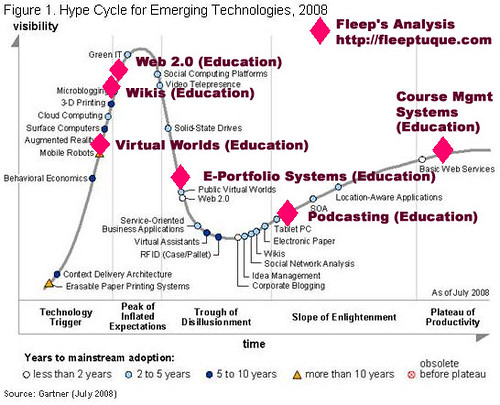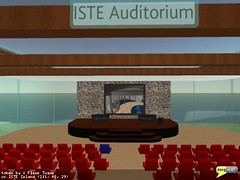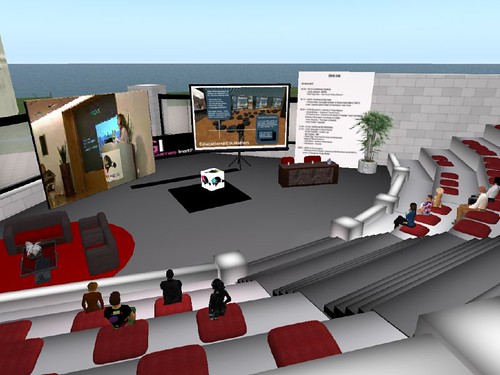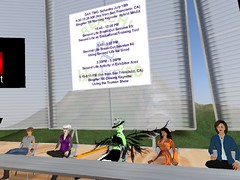Want to know what netizens are thinking about John McCain’s pick for VP, Sarah Palin?
Left, right, center, confused, mainstream media, international – one of the wonderful things about Twitter is that you get a truly bizarre cross-section commentary from anyone with a Twitter account.
I’ve been addicted to watching the scroll this morning, in fact I haven’t done much else. I haven’t turned on the TV even once, I haven’t yet read a newspaper, I haven’t gotten information from anywhere about Palin but from Twitter. And the emerging picture is.. fascinating.
Shock & Awe(ful)
Predictably, McCain supporters are jazzed and crowing about her rock-solid Christian, pro-life, gun-totin, positions, while Obama supporters are laughing at what appears to be a completely ridiculous choice. Non-political junkies appear to be confused since they’ve never heard of her till yesterday (or this morning), international commentary seems decidedly anti-Palin, and above all, everyone is shocked and a bit confused by the choice and drowing in “Little Known Fact” jokes, a take off the “Chuck Norris” internet meme. If you don’t know what that’s about, google it. Here’s a sampling from the last 10 seconds:
psicocaccola: La Stampa abbocca alla copertina finta di Vogue sulla Palin: storia e pdf solo per oggi http://www.typepad.com/t/trackback/1133195/32917548
less than 10 seconds ago · Reply · View Tweet
bluenc: BlueNC | Sarah Palin’s Screen Test With Ted Stevens: John McCain knew he had to put Sarah Palin on.. http://tinyurl.com/6f934p (expand)
1 minute ago · Reply · View Tweet
radiogretchen: Really bummed not to have Tim Russert interview Sarah Palin tomorrow morning.
1 minute ago · Reply · View Tweet
shawnr: Palin was born in Sandpoint, ID. Strategy: McCain locks up the Idaho-Alaska vote, securing much of the Total Nutjob wing of the GOP.
2 minutes ago · Reply · View Tweet
Shripriya: OMG -Palin is sitting on a huge bear http://snurl.com/3lb9b (expand) McCain seriously thinks women will just see the choromosomes and vote? Insulting
2 minutes ago · Reply · View Tweet
huffpost: is still trying to find the Sarah Palin hook that makes her a good choice for Miss Dairy Festival, let alone VP of the USA -JackiSchechner
2 minutes ago · Reply · View Tweet
aefoley: Little Known Fact: Chuck Norris’s Second Life character is Sarah Palin.
2 minutes ago · Reply · View Tweet
amandaelend: Palin is still nursing her 5-month old son with Down Syndrome
2 minutes ago · Reply · View Tweet
squeezyb: @bill_beal butting in-Tina Fey, who looks like Sarah Palin, plays Liz Lemon on 30 Rock. Kenneth is the NBC page on the show. Who is Cleo?
2 minutes ago · Reply · View Tweet
jbum: Little Known Fact: Sarah Palin and Tina Fey have never been seen in the same location: http://tinyurl.com/6jzaav (expand)
2 minutes ago · Reply · View Tweet
RedheadWriting: I’m a Conservative and I’m OK – http://tinyurl.com/6mdu5z (expand) More thoughts on Sarah Palin, John McCain and props to @myklroventine!
GenY Response
In all of this link surfing and rant reading, I’ve been specifically looking for reactions from younger people. I personally think this election may see the largest youth voter turn-out of any election in American history. Whether left or right, younger voters seem highly engaged this time around, and the availability of information, news, discussion forums, and videos on the internet is transforming and informing a new generation of voters. Increasingly, I am seeing more political commentary from young bloggers, tweeters, and party activists.
From PhillyD.TV we get this:
and from @lindsaypw (college student): Palin, shes anti-choice, homophobic, elitist, inexperienced, likes guns, hates wildlife, has her own scandal, and won a beauty contest.
and from @Bags1: Anyone else confused about Palin?
Anyone else have good examples of young bloggers/tweeters responding to the Palin pick?
Identity Politics & Misogyny
Which leads me to my next thought, that this has truly been and still is the most interesting election of my lifetime, particularly in terms of identity politics. The right has long accused the left of being nothing more than a coalition of various identity groups banded together with no coherent, cohesive theme. This criticism rang true in the 80s and 90s, but seems less so over time – and makes McCain’s pick of Sarah Palin even more surprising to me, as it seems to be a move to energize the various identity groups on the RIGHT: women, evangelicals, pro-life, 2nd amendment supporters. Has the Republican Party fallen to scrambling for identity coalitions now that the Democratic Party has emerged with a strong policy theme grounded not on identity politics but by political ideals? Very interesting.
The cynic in me says that while racism and misogyny still run strong in this country, misogyny continues to be the stronger of the two. If I think back to the small town where I grew up, where prejudice and “traditional” values still hold sway, I imagine that the vast majority don’t vote at all, those who do wouldn’t vote for a “damned librul” if their life depended upon it, and whatever tiny, miniscule fraction that might have been on the fence certainly can’t and won’t vote for a woman, even if she’s a “babe”, as Rush Limbaugh described her.
In just one day of reaction, Palin’s choice has caused the internet to erupt in oversexualized references to her appearance, questions about her returning to work 3 days after giving birth to a baby with special needs, and her opposition to abortion even in the case of rape. McCain’s choice has thrown the doors wide open on some of the most contentious gender issues of our time, just when the furor over Hillary was about to die down following the Democratic National Convention. Political commentator QueenofSpain thanks McCain on her blog, saying:
Although maybe once the evangelicals catch wind of her balancing work and family, and people become outraged that she is a woman running for office…maybe then we can have a real discussion in her party’s base about those “family values†they like to push. Maybe then it will be “ok†since she isn’t a baby-killing lesbian hippie.
So thanks John McCain, thanks for picking a woman as your running mate so America can (once again) have these discussions.
I’m not so sure I’m thankful. I’m afraid that images like the one from Valleywag will simply yank us back three decades in the debate about women in positions of power, where sex overshadows qualifications, and cynical jokes elicit laughter that underscores the most hateful and subversive kinds of misogyny.
 [/caption]
[/caption]
Photoshopped image of Sarah Palin posted on internet-gossip site Valleywag, ironically submitted by a woman.
If McCain had chosen a well-qualified woman, a substantial leader with proven experience, who had already been vetted, who had already faced the kinds of tawdry and misogynist undercurrents in American political culture, like Kay Bailey Hutchinson, Olympia Snow, Elizabeth Dole, or Christie Todd-Whitman, then perhaps it might have re-opened a good conversation about women in high office. Instead, I think I agree with Newsweek that Palin has been set up for failure – and as much as she represents all women, she sets us all up for failure, too.
I no more want to see Palin become a target of hateful, misogynist mockery than I did Hillary (though I was not a Hillary supporter), even if I vociferously disagree with her politics.
No, I think this was an ill-fated choice that ultimately backfires on many levels – but especially for women.
![Reblog this post [with Zemanta]](http://img.zemanta.com/reblog_c.png?x-id=e3a37899-f0ae-42ca-a0d2-6980b32646f9)



![Reblog this post [with Zemanta]](http://img.zemanta.com/reblog_c.png?x-id=747e33a2-bd05-4448-b789-a033ad76f097)












